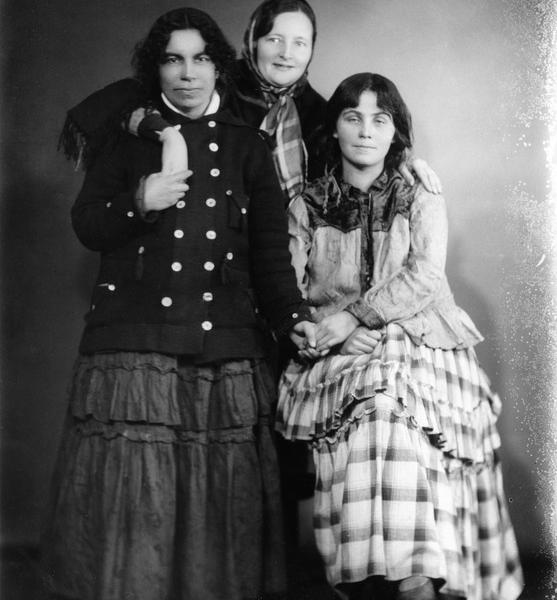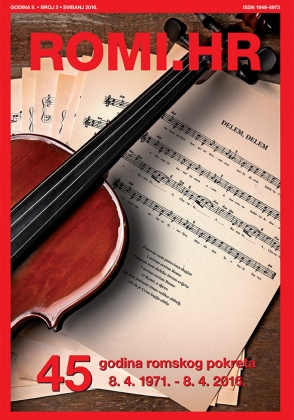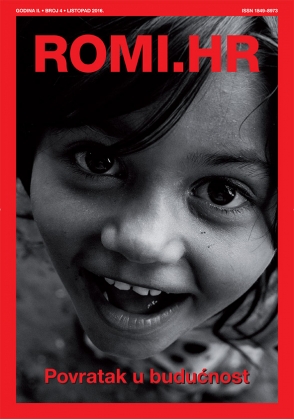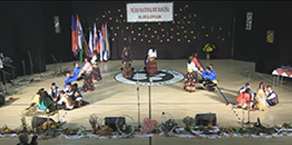Features ROMI.HR
/The traditional dress of Kale women from Finland is a vivid expression of cultural pride and identity. Its daily wear signifies a deep-rooted commitment to heritage and tradition, setting the Kale women apart from other Roma communities where traditional dress is less commonly worn in everyday life. These factors create a unique context in Finland that supports the preservation of traditional attire.
The Roma people have been present in Finland for over 500 years. Today, an estimated 10,000 Roma live in Finland, primarily in the southern and western parts of the country. Kale community in Finland, a subgroup of the Roma, is known for maintaining distinctive cultural practices, including their unique traditional dress.
Significance of Traditional Dress
The traditional dress Kale women in Finland is not merely a costume but a powerful symbol of cultural identity and unity. When a girl transitions into womanhood, she usually starts wearing the traditional Roma dress, marking her adulthood and the associated rights and responsibilities. Growing up in a community where nearly all women wear this attire, young girls find it natural to adopt the traditional dress.
Characteristics
The traditional dress is characterized by heavy, full-length black velvet skirts worn relatively high at the waist, supported by padding, and puffed blouses often adorned with prominent ruffles and lace These skirts are often paired with colorful aprons, adding a vibrant contrast to the dark fabric of the skirts. These blouses are made from ornamental cloth decorated with sequins or have a metallic sheen. The intricate lace crocheting, once an important source of income, continues to be a notable feature of their costumes. Shawls are another significant element of the traditional dress. Headscarves are also commonly worn by Kale women, covering their hair in a style that signifies respect and tradition.
Regional Variations
In Southern Europe, Roma women’s traditional dress can include wide skirts with multiple layers, often in bright colors and decorated with sequins or beads. This contrasts with the relatively simpler appearance of the Kale dress in Finland. Roma women from Spain, for instance, might wear flamenco-style dresses with ruffles and bright patterns, which are markedly different from the Kale style in Finland.
The use of black velvet is less common outside the Kale community in Finland, where more vibrant and diverse color schemes are typically preferred. For example, Roma costumes in Eastern Europe might include brightly colored skirts with floral patterns and lighter fabrics.
The Role of Tradition in Modern Times
The Kale community in Finland has maintained a continuous presence in Finland for several centuries. Over this time, the traditional dress has rooted in their daily lives and cultural practices. For the Kale in Finland, traditional dress plays a crucial role in maintaining cultural identity. The traditional attire serves as a visual symbol of their heritage and community bonds, helping to preserve their unique customs and traditions in a predominantly non-Roma society, and ensuring that younger generations learn and appreciate their cultural heritage.
Unlike in many other countries, where traditional Roma dress is reserved for special occasions, Kale women in Finland wear their traditional dress in everyday life. Despite its elaborate nature, the dress does not prevent women from participating in education or working life. Although each person has the freedom to choose whether to wear the traditional dress, those who do must adhere to its norms and cannot casually abandon it.
Government Support and Legal Framework
In contrast, Roma communities in other countries often face a lot of difficulties that affect their dress practices. High levels of discrimination and stigma against Roma people in some countries can be one of the reasons to discourage the wearing of traditional dress in everyday life. Roma individuals may choose to wear mainstream clothing to avoid harassment or social exclusion. Economic factors can also play a role, as traditional attire can be expensive to make and maintain. In economically disadvantaged Roma communities, the financial burden may lead to a preference for more affordable, modern clothing.
That is why it is very important that in Finland government has taken steps to support and fund the preservation of Kale traditions, including their traditional dress, contributing to the community's resilience amidst broader societal changes and challenges. Initiatives and programs aimed at promoting cultural heritage help ensure that the unique customs of the Kale in Finland are recognized and respected. Efforts are made within the Kale community in Finland to preserve these traditional dress elements, often through cultural events and celebrations where traditional attire is showcased.
The traditional dress of Kale women in Finland is a vivid expression of cultural pride and identity. Its daily wear signifies a deep-rooted commitment to heritage and tradition, setting the Kale in Finland apart from other Roma communities where traditional dress is less commonly worn in everyday life. These factors create a unique context in Finland that supports the preservation of traditional attire.
 Back to Features
Back to Features













